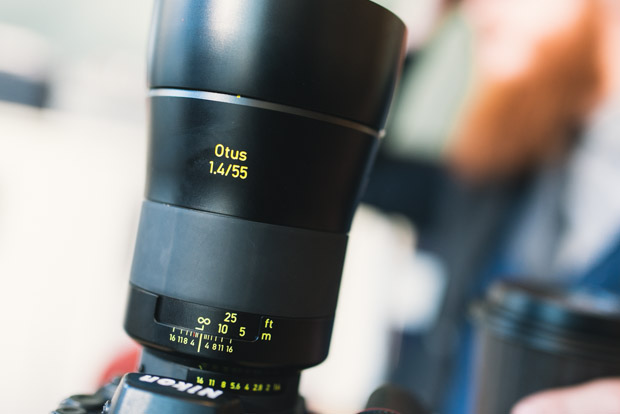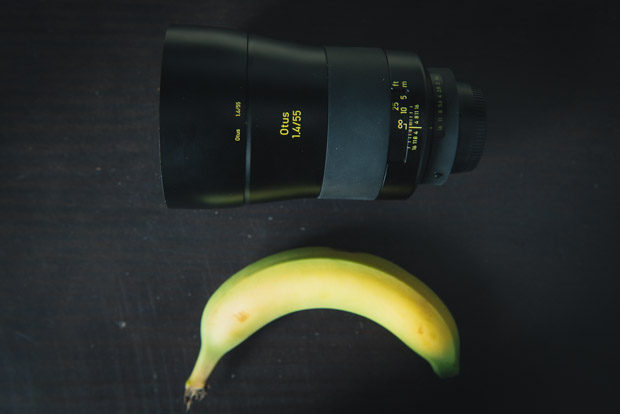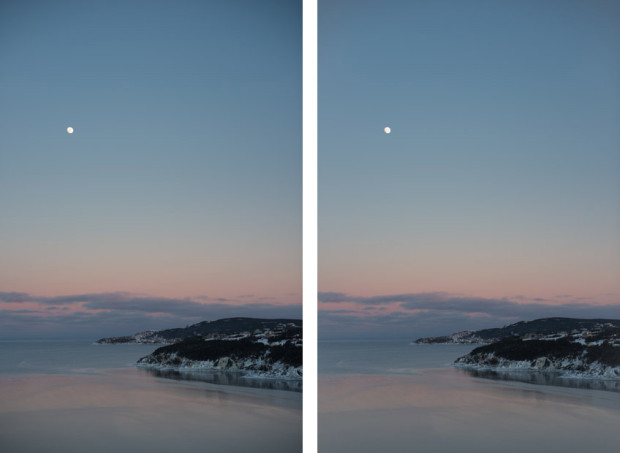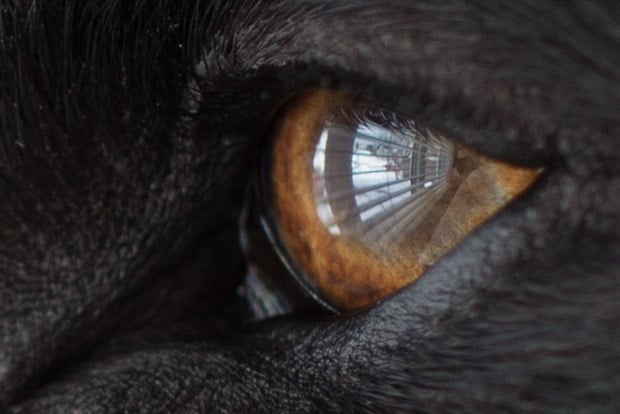Review: Zeiss 55mm f/1.4 Otus, Beauty and a Beast
![]()
The Zeiss Otus is easily the biggest DSLR 55mm currently available. I say currently, because I’m sure in some lab in the depths of upper Siberia a technician made a 50mm the size of a small child, just because. But the Otus shouldn’t surprise us, Zeiss will never shy away from the pursuit of image quality at the expensive of “convenience.”
The name “Otus” comes from a genus of owls and priced at four thousand dollars you’d expect an owl to come with it. One which will scout the lands miles ahead looking for brilliant photo opportunities. One which, upon request, will use its wings to swat inattentive family members in the back of the head to keep their wandering eyes locked on you during wedding pictures.
But there is no owl. All there is is this animal of a lens. A preying mantis of 55mm ultra fast glass waiting to make a picture in any and all circumstances. It cares not whether it’s mid-afternoon on a sunny day or approaching 3am on a moonless night. The Otus sits back waiting for its chance to strike. Looking for an opportunity to make the sharpest and most spectacular photo your camera’s sensor will ever bear witness to.
It’s the Zeiss Otus 55mm f/1.4. It’s big, it’s black and it’s the sharpest damn lens you’ll ever see.
![]()
Zeiss has a high standard of production, arguably the highest. This Otus raises that bar. As we slowly creep DSLRs down the road of 36 megapixels and beyond, mounting a late 90’s fifty mil on your D800 shows you just how far 35mm sensors have come in the past 10 years. You’ll also notice just how bad that 50mm is and why you need a new one, from this century.
Those previously unnoticeable imperfections may trouble some to a point of angered frustration.
![]()
Frustration that I have never before been so troubled by. It pains me to think that after using the Zeiss Otus I’m going to have to go back and use my inferior Nikon equivalent fifties. It’s really, really frustrating — to the degree where I’m actually angry. Zeiss has set the bar so high for what is to be considered perfection that going forward I may find it hard to use some of my other glass.
OK, not really, but if the price wasn’t such a prohibitive factor I’d buy this behemoth in a heartbeat.
![]()
It’s a manual focus beauty and the focusing action is positively sublime. The throw is long and luxurious. Precise enough that even on a Nikon that lacks any proper manual focusing screen, hitting tack sharp focus quickly and accurately even wide open wasn’t an issue. Zeiss has perfectly positioned the focusing ring, which combined with the griped rubber allows for effortless focusing with just the left index finger while still allowing for left hand camera support.
![]()
Thankfully, the distance scale includes a depth of field guide and look here, an actual aperture adjustment ring (with a lock, huzzah!). This is important. On the last Zeiss I tested that featured this same gripped rubber on the aperture and focus rings — the Zeiss 12mm for the Fuji X-Mount — the aperture had no lock and was quite prone to many an accidental adjustment.

I’d put the Otus’ weight in the “Not Bad” category but a nifty-fifty it is not. With the majority of the weight seemingly near the rear of the lens once it’s mounted, it’s so well-balanced you almost forget it’s not a cheapo nifty. For comparison sake, it’s similar to any 70-200 stabilized f/2.8 lens once it’s mounted.

This less is not without its flaws. I know, I know… For four G’s it should be absolutely perfect but it isn’t. For one there is light fall off in the corners and quite a bit at that. The corner darkness begins to subside around f/2.8 but can still be noticed under certain conditions till f/4.

The Otus makes up for its lack of corner to corner exposure consistency by being ridiculously tack sharp top to bottom and side to side when wide open. How sharp? I’ll bet there will be people complaining that it’s actually too sharp.


And contrasty? Wowzers!
![]()
The dark areas of any frame I shot were gifted with detail that on many other lenses would have been cloudy spots of black noise. If you’re shooting a D800E or A7r, then you need this lens. This is the kind of lens these cameras were made for.
My only other gripe is that the hood is without a locking mechanism and for $4000 that’s kind of a pain. The hood will from time to time decide to free itself from the gentle grip it has on the lens. A locking mechanism or a deep threaded screw on hood would have been nice. In 10 years I can foresee many a 55mm Otus without a hood or sporting gaffer tape for sale on the used markets.
![]()
Aside from this nitpicking the hood is a beauty. All metal, rock solid and lined with black felt to keep down on those pesky reflections and lens flare. It will never be removed from the body of your lens and it should have just been permanently attached. The only people who will ever want to remove the hood are those using drop in filters and I’m sure there’s a way around that.
Conclusion
![]()
Yes it’s massive and likely to be the largest standard prime in your bag… but it’s worth it. Insofar as the idea that “a good lens is an investment” consider this: It’s one of the few lenses that will actually prove that old adage true.
Long after we’ve crossed the 50, 60 and 70 megapixel threshold for DSLRs the Zeiss Otus 55mm will still be producing incredibly sharp photographs and I can’t say that right now for any other lens I own. Assuming you own it for 10 years or more, $4,000 is a small price to pay for the quality of image you’ll have over that time period.
![]()
If I had to rate this out of 10, I’d give it a 9.3. When considering that a 50-60mm will generally walk the line of convenience and image quality the Otus loses points for size and weight. It would lose more if it were not balanced so well and the image quality wasn’t so superb, making the trade off worth it for many.
The falloff also factors into its imperfect score. While subtle darkness in the corners can compliment an image and serve a purpose, I’d prefer to have a clean photo from scratch — I can always add that effect in post. The lack of a lock on the hood is a minor factor but it does affect the score. If it were a sub $2000 lens this could be overlooked but again, for this much money on a manual focus 55mm you expect no element to be overlooked.
The only other knock against the Otus is the price, it isn’t cheap. Once I’ve resigned myself to drop four large on a lens, there’s going to be others that tempt me. More so when you remember Nikon’s own top dog, the 58mm is less than half as expensive as the Otus and I’ll still have money left over to begin saving for the Zeiss Otus 85mm.